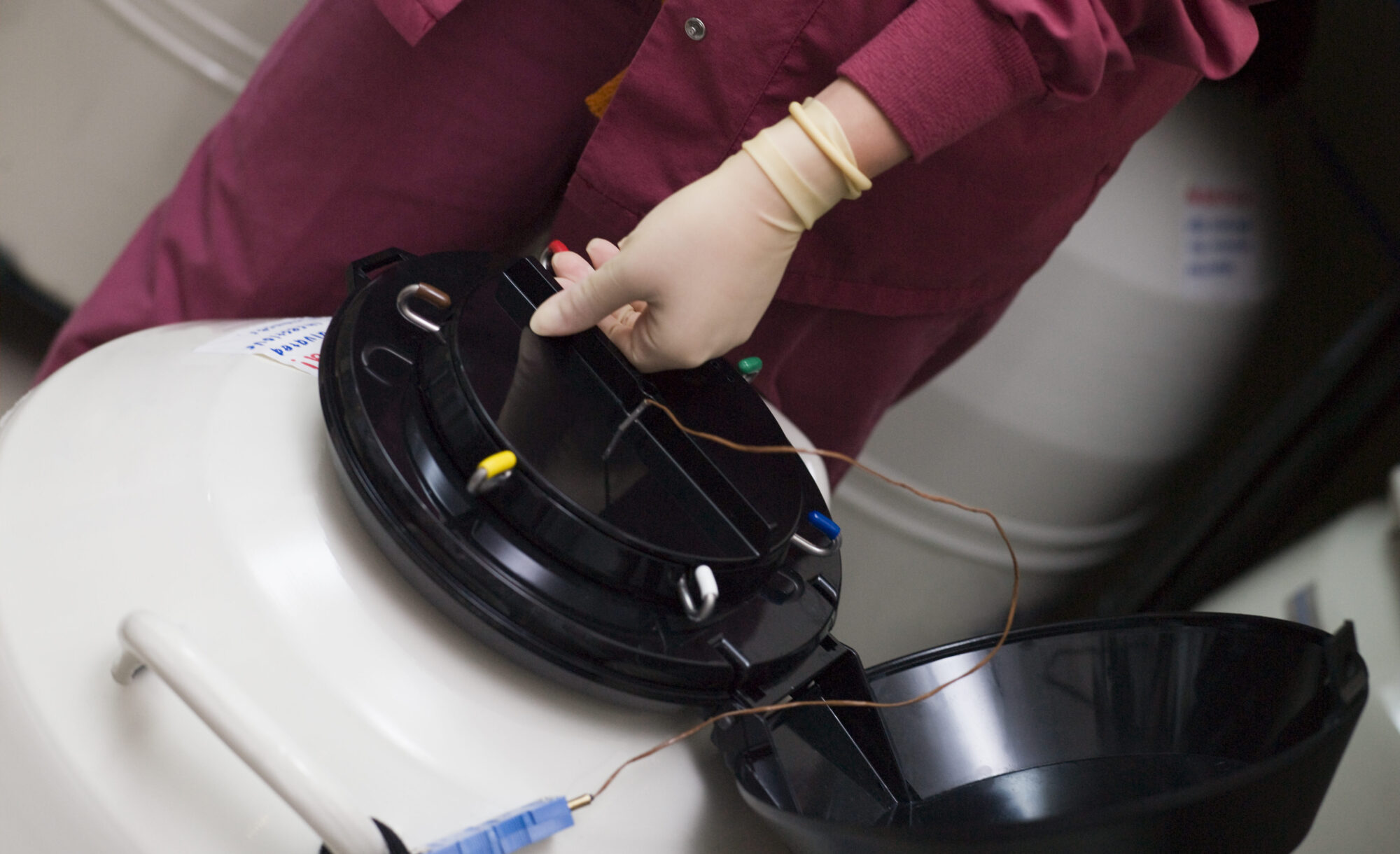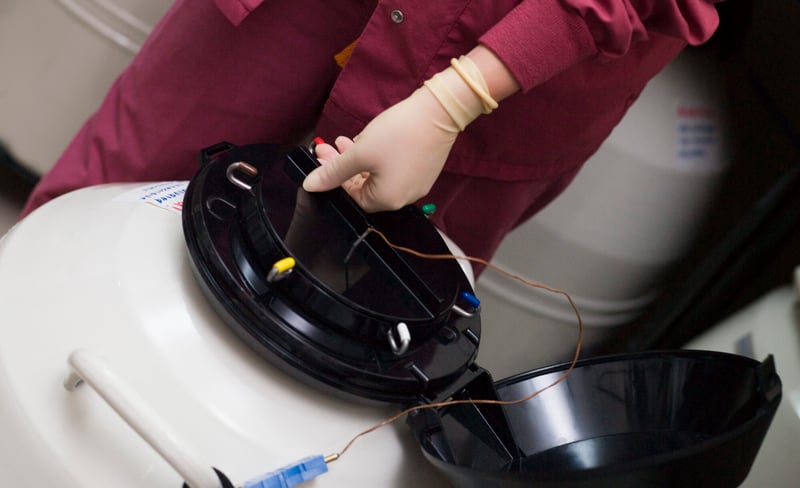 Embryo Cryopreservation FAQ"
class="bg-img"
fetchpriority="high"
loading="eager"
decoding="async">
Embryo Cryopreservation FAQ"
class="bg-img"
fetchpriority="high"
loading="eager"
decoding="async">
Written By: Women & Infants Fertility Center on June 7, 2019

Cryopreservation of embryos is a complicated process with a number of factors to consider. From understanding consent to cryopreservation protocol, there are a lot of moving parts for a patient to consider. Dr. Carol Wheeler and Richard Hackett, Women & Infants Fertility Center lab director, answered some of the most commonly asked cryopreservation questions.
Cryopreservation is the process of freezing and storing structurally intact living cells and tissue (eggs, embryos) by suspending their growth and degradation at very low temperatures. Essentially, we will freeze residual embryos for future use, if they meet a certain standard. We remove most of the water from the cells and put a cryoprotectant in the water’s place.
The embryos are stored under liquid nitrogen in what is called a straw. These straws are labeled with the patient name and other identifying information.
We catalog the location in the cryotanks of each straw in our database as well as in the patient’s charts, so we always know where everything is.
The Women & Infants Fertility Center boasts the only IVF lab in the state of Rhode Island. The lab started as a small room in the Women & Infants Hospital basement 30 years ago.
At Women & Infants Fertility Center, only embryology staff or physicians are allowed into the lab, which houses the cryostorage area. Each cryostorage tank is alarmed to monitor the tank temperature. Members of the team are alerted if the temperature rises a single degree above what is necessary.
We also check the tanks daily to ensure the tanks are at a temperature level we want, which is actually well above what we need to store the embryos.
We are a College of American Pathologist (CAP) accredited laboratory. Inspection by CAP occurs every two years and re-certification occurs every year. This certification indicates that we are operating at the highest standards possible.
At the time of freezing, we determine the potential viability of the embryo. Science has advanced and is continuing to do so, and we understand more about this process now than we did in the past. By examining the structures of the embryos and key factors that could affect survival during the freezing process, including size, we can make a determination.
When we determine viability, we look at the morphology, or the outside of the embryo. If the cells are too big, or the quality is less than ideal, they may not make it through the freezing process.
While most do survive, unfortunately, there are some embryos, despite our best efforts to select the highest quality, that simply do not survive the process. This is not a common occurrence but does happen and is a risk of cryopreservation.
Embryos can remain in storage for as long as an individual would like. However, our current policy is that we will not store embryos in our lab beyond the time when the woman reaches age 55. At that time, the embryos can be moved to another storage facility if the patient wants to continue storage.
With the consent of the patients (an individual patient or the patient and partner), we can freeze the embryos. Decisions about cryopreserved embryos (e.g. when to thaw and transfer) require the signed consent of the individuals who signed the consent to cryopreserve. If there is a change in personal circumstances, there may be additional steps needed. Patients may consider consulting with an attorney to plan for these considerations.
For medical and social reasons, men and women may choose to preserve their future fertility.
Preimplantation genetic testing (PGT), which identifies possible genetic problems that could cause implantation failure, miscarriage or birth defects, is not routine in the cryopreservation process. However, patients may choose to do PGT prior to freezing. The results of PGT will come back to our center approximately 10-14 days after biopsy and freezing.
Answers provided by Dr. Carol Wheeler and Richard Hackett, MS, HCLD.
Disclaimer: The content in this blog is for informational and educational purposes only and should not serve as medical advice, consultation, or diagnosis. If you have a medical concern, please consult your healthcare provider or seek immediate medical treatment.
Send Us A Message
90 Plain Street,
Providence, RI 02903
Copyright © 2026 Care New England Health System